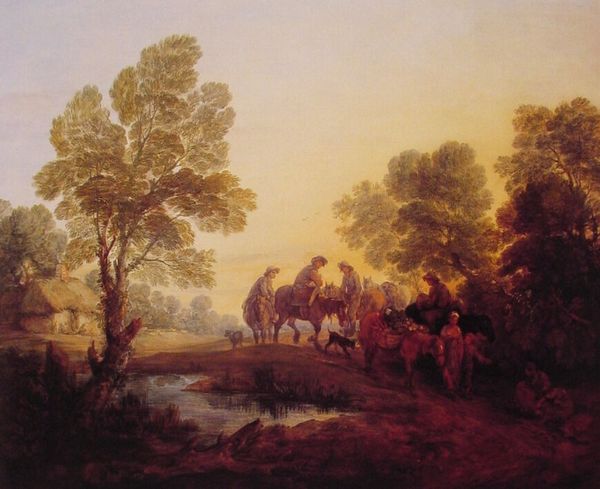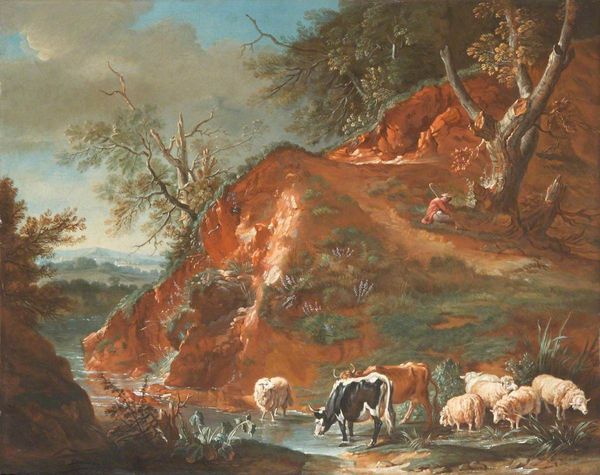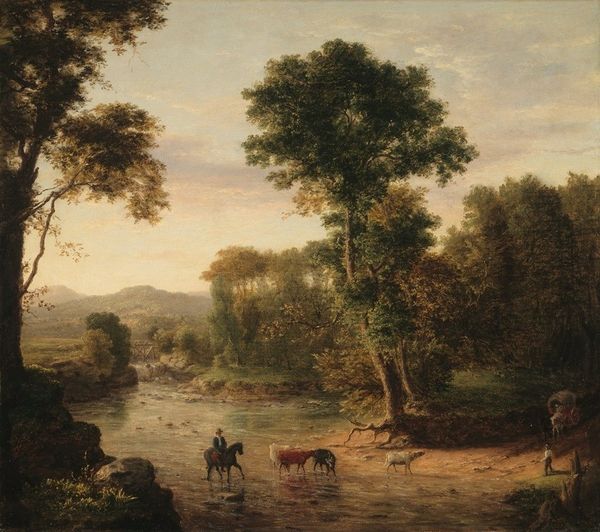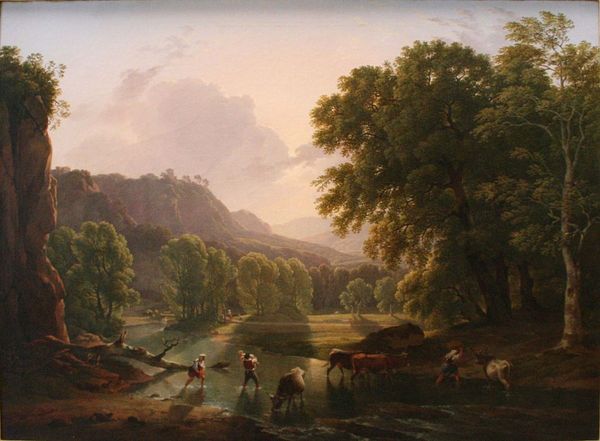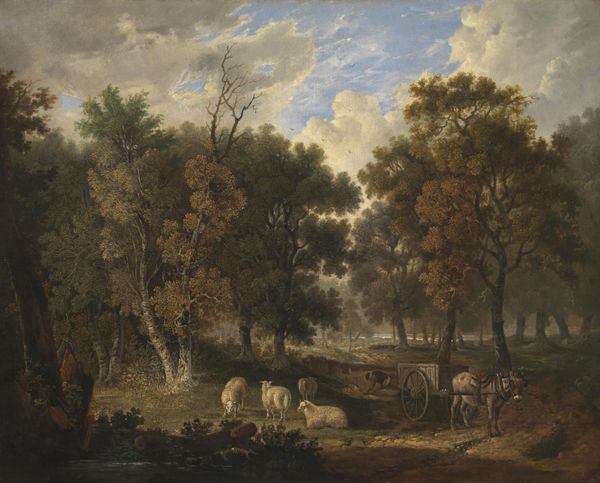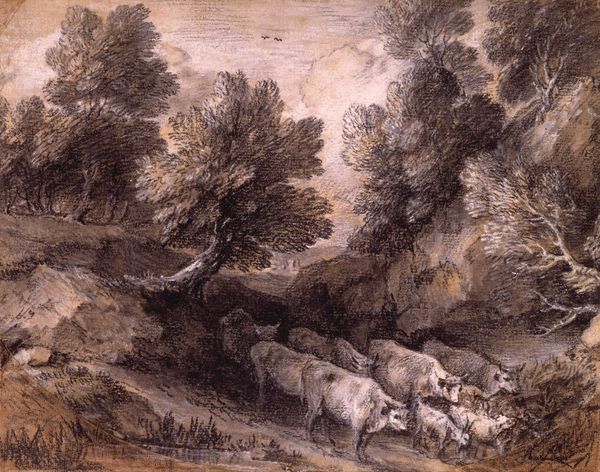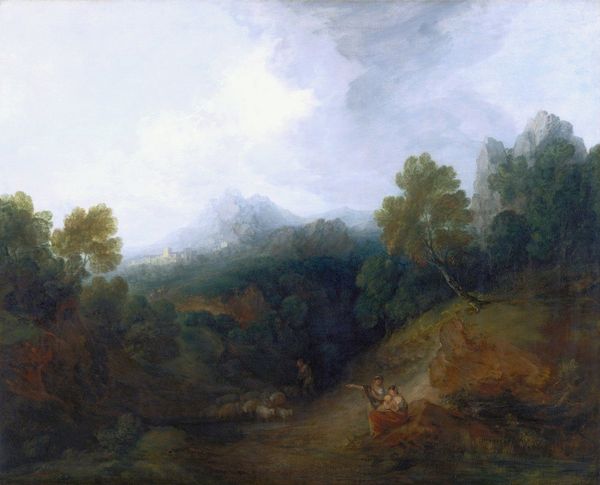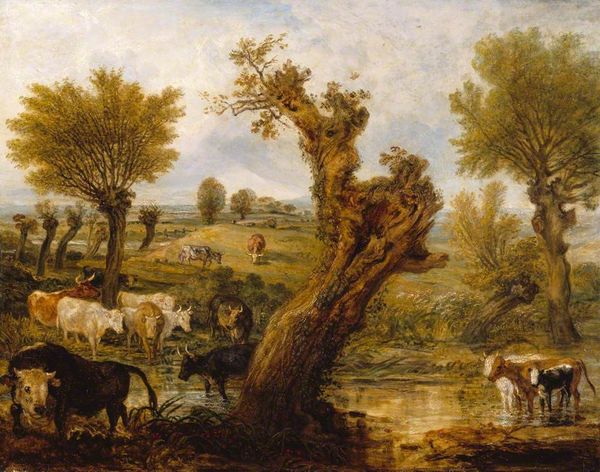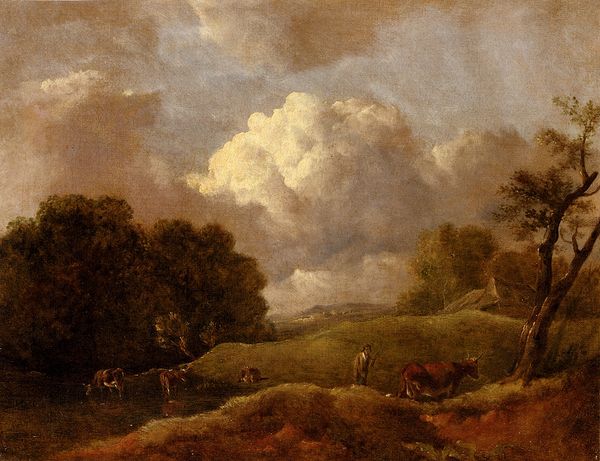
#
sky
#
abstract painting
#
landscape
#
charcoal drawing
#
impressionist landscape
#
possibly oil pastel
#
oil painting
#
fluid art
#
acrylic on canvas
#
underpainting
#
seascape
#
natural-landscape
#
watercolor
Dimensions: 147 x 180 cm
Copyright: Public domain
Editor: Here we have Thomas Gainsborough's "The Watering Place" from 1777, currently residing at the National Gallery. The way he's depicted this rural scene, especially the use of light, feels incredibly romantic. What are your thoughts on it? Curator: It's fascinating to consider Gainsborough's material choices and techniques in relation to the societal values of his time. Note how the very act of depicting labor – tending cattle – is almost obscured by the picturesque aesthetic. What does that say about the consumption of rural imagery by the elite? Editor: That's an interesting point. It's easy to get lost in the pretty picture and forget about the lives of the people actually working the land. Do you think the materials themselves, like the oil paint he used, played a role in creating this idealized view? Curator: Absolutely. Oil paint allowed for blending and layering, creating that soft, hazy atmosphere that romanticizes the scene. But consider the availability of those materials – who had access to them? The canvas, the pigments...they all represent a certain level of economic privilege which informs the vision being portrayed. Editor: So, even the very substance of the painting becomes part of the narrative. That the act of representing the scene, is underpinned by access to resources? Curator: Precisely! It’s about unveiling the means of production behind this idyllic representation. Thinking about art in this way is more challenging. Editor: This conversation has made me see it with fresh eyes. Thanks! Curator: It has helped me, too!
Comments
No comments
Be the first to comment and join the conversation on the ultimate creative platform.


